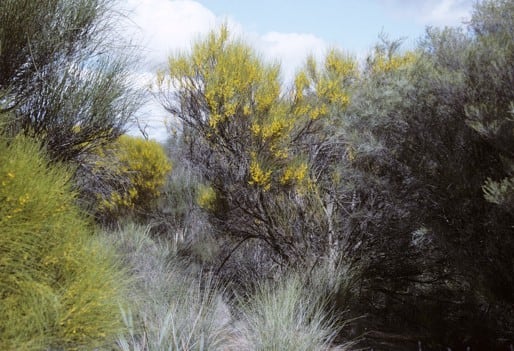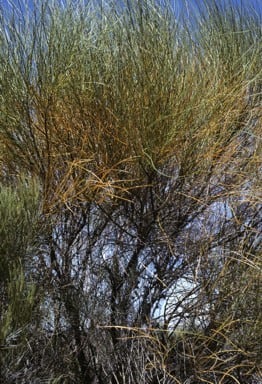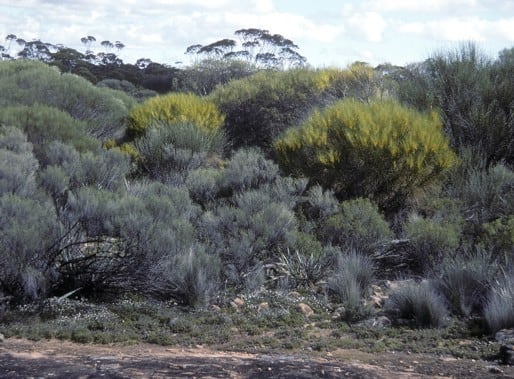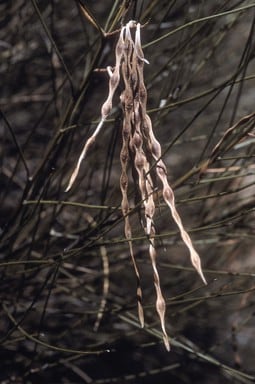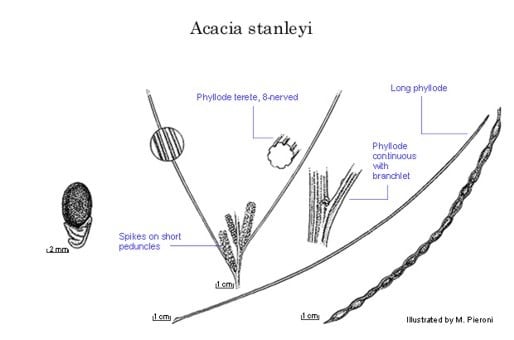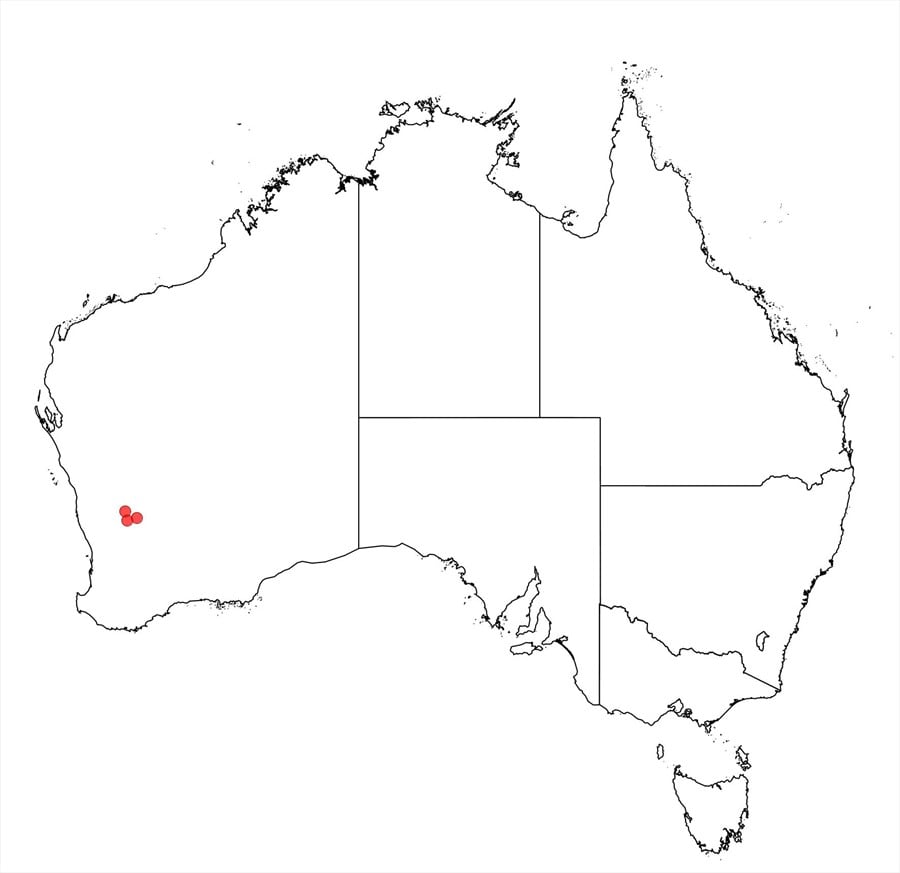Acacia stanleyi Maslin
WATTLE
Acacias of Australia
Common Name
Stanley’s Rock Wattle
Family
Fabaceae
Distribution
Endemic to the wheatbelt region, W.A.; known from NE of Kalannie, Mt Marshall area and Mollerin.
Description
Shrub 2–3.5 m high. Branchlets subglabrous to very sparsely appressed-hairy especially when young, red-brown except yellow at extremities. Phyllodes continuous with branchlets and not easily separated from them, ascending to erect, mostly shallowly incurved, sometimes shallowly sinuous or substraight, terete, subrigid, 15–30 cm long, 1–1.5 mm diam., acute to acuminate, ±glabrous, pale green to mid-green, with 8 raised longitudinal nerves each separated by a distinct furrow; pulvinus absent. Inflorescences simple; spikes 25–35 mm long, 5–7 mm diam., densely flowered, golden; bracteoles spathulate to sub-peltate, c. 1 mm long; peduncles 1–2 mm long, appressed-hairy. Flowers 4-merous; calyx 2/3 united. Pods submoniliform, (5–) 7–14 (–16.5) cm long, 3–5 mm wide, thinly coriaceous, pendulous to sub-pendulous, glabrous. Seeds longitudinal, elliptic to oblong-elliptic, 3–4 mm long, slightly shiny but surface minutely rugose and pitted, black; aril white to pale brownish cream.
Phenology
Flowers July–Sept.
Habitat
Grows in association with granite outcrops in tall shrubland dominated by Allocasuarina and Acacia.
Specimens
W.A.: NE of Kalannie [precise localities withheld for conservation purposes], B.R.Maslin 7501 (PERTH), 7503 (PERTH), B.Rosier 61 (PERTH) and J.Wege MMV 126 (PERTH).
Notes
The habit of A. stanleyi is similar to that of Calycopeplus pauciflorus (Euphorbiaceae). The dead (grey) phyllodes remain attached to the branches below the living (green) crown for a considerable period of time.
Most closely related to A. karina which differs in its reddish brown upper branchlets, more slender phyllodes, more loosely flowered spikes, longer peduncles and shorter bracteoles. Furthermore, A. karina grows mainly on banded ironstone hills. Both species are allied to A. jibberdingensis which is most readily recognized by its phyllodes which have a distinct pulvinus. Acacia longiphyllodinea superficially resembles A. stanleyi in having very long, terete phyllodes that are continuous with the branchlets but is readily recognized by its phyllode nerves being more numerous and closer together, branchlets often pruinose, peduncles longer and glabrous, flowers 5-merous and pods flat.
FOA Reference
Data derived from Flora of Australia Volumes 11A (2001), 11B (2001) and 12 (1998), products of ABRS, ©Commonwealth of Australia
Author
J.Reid, B.R.Maslin
This identification key and fact sheets are available as a mobile application:
URL: https://apps.lucidcentral.org/wattle/
© Copyright 2018. All rights reserved.

